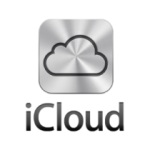Yes, we all know what you’re thinking, just why is the newly upgraded iCloud Drive coming to Windows before it makes it to Mac? is Apple trolling their fanboys for kicks, or is there a real reason behind the move to give the service to mean old Windows users first?
The new version of iCloud hit mobile devices this week with the launch of iOS 8, but isn’t coming to Mac quite yet according to Apple, who are advising Mac users to wait for the upcoming Mac OS X Yosemite update before they’ll start seeing the new iCloud in action and being able to use it properly Apple desktops and laptops.
SEE ALSO: Sony SmartEyeglass Set For Beta Release
The Windows version of Apple’s cloud sharing service functions in a similar way to Dropbox and Google Drive, namely that the service lets you store documents, photos and other media on an easily accessible cloud drive which you can log into from any computer. In fact, the service manages to rival Google’s cloud sharing in a number of ways.
Your iCloud Drive appears in the favourites section of Windows File Explorer, which is a pretty unique feature, it means you can access it as though it was a standard folder from within Windows. Emails from iCloud Mail can also be synced to versions of Outlook on Windows later than Outlook 2007, which is pretty much a given. if not, do yourself a favor and update that Outlook.
You can also sync bookmarks from Safari into Internet Explorer, Google Chrome or Firefox web browsers, as well as pick up your Mac Photo Stream on Windows using the new iCloud Drive.
SEE ALSO: EE launches handy iPhone 6, 6 Plus, 5s and 5C comparison tool!
Mac users are advised to hold off upgrading their iCloud for the moment, as any and all documents and other media items placed in older versions of the Mac OS may conflict with the OS X Yosemite version. It’s for the best, as when the new iCloud upgrade comes packaged with OS X Yosemite, it’ll also include iCloud Keychain password sync, and Apple’s “Find My Device” functionality.
Source: Apple iCloud for Windows (download it here)
Via: TechSpot


